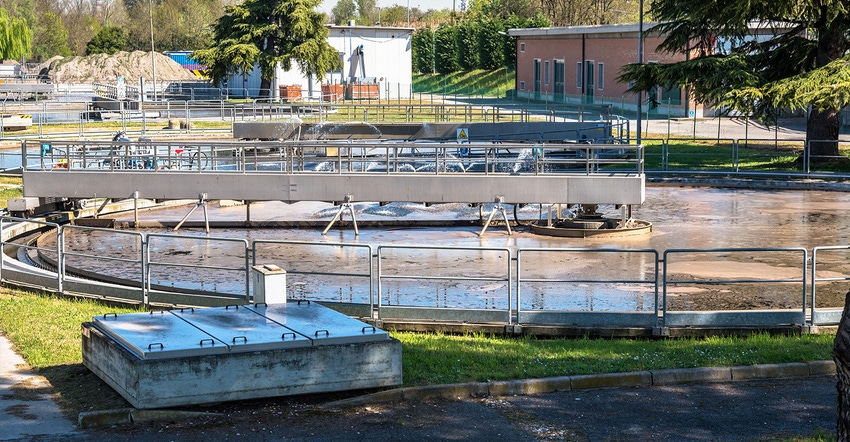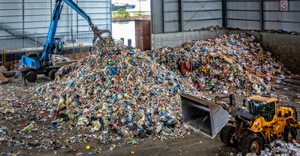Emerging Contaminant Concerns Drive Changes in Sludge Management
About 50 percent of sludge has been land applied in the U.S. historically, though now states and the U.S. Environmental Protection Agency are starting to scrutinize this practice as per-and polyfluoroalkyl substances (PFAS), microplastics, and other emerging contaminants hit the radar. The concern is that these toxins will leak into groundwater, streams, and rivers; but needing to find alternative management methods is not without challenges.

About 50 percent of sludge has been land applied in the U.S. historically, though now states and the U.S. Environmental Protection Agency are starting to scrutinize this practice as per-and polyfluoroalkyl substances (PFAS), microplastics, and other emerging contaminants hit the radar. The concern is that these toxins will leak into groundwater, streams, and rivers; but needing to find alternative management methods is not without challenges.
“Wastewater treatment plants’ role is to ensure water is clean when it leaves their facilities, but there are inevitably residual biosolids to deal with [from various manufacturing processes]. For years they were easy and cheap to manage, either as land applications or by landfilling or incinerating the material,” says Chip Pless, sales manager, Sludge Dryers for LCI Corporation. Pless has worked in the biosolids industry in various roles.
Now, as states clamp down on land applications, they are left only with landfilling and incineration as fallbacks. And incineration is becoming less of an option as some wastewater treatment plants shutter these operations due to high maintenance costs, among reasons. And or these facilities are reaching capacity, placing more burden on them and on landfills to figure out what do with the sludge and biosolids (the latter being treated sludge).
Private and public operators have said they are concerned that in the short term landfills will be inundated with more biosolids due to fewer outlets. But landfills can only accept so much high-liquid materials. And as more cardboard and paper waste is diverted from their sites, they have less material to mix with the sludge to bind it to ensure slope stability.
In certain regions, sludge disposal costs are skyrocketing—up from about $25 a ton to over $200 per ton and upwards of $300 in some places, Pless says.
Maine is among the states feeling the pain. It recently banned land application of sludge as well as the sale of compost and other agricultural products and materials containing sludge and septage.
“The outlet for roughly 60 percent of the biosolids generated in Maine was abruptly ended through this legislation, which has created immense pressure on landfills to accept and manage biosolids.
“Capacity to manage the material has been a challenge, and its cost has doubled over a three-year period,” says Scott Firmin, director of Wastewater Services, Portland Water District.
Most recently, Michigan set land application limits on biosolids laden with perfluorooctanoic acid (PFOA) and perfluorooctanesulfonic acid (PFOS), the most common PFAS.
Some prominent generators of these organic wastes are food, beverage, and paper producers and pharma, though other manufacturers have biosolids to be dealt with.
Bioenergy Devco has a long-term relationship with Perdue to take sludge from its poultry manufacturing processes, called dissolved air flotation (DAF) sludge. DAF is a method for separating solids from liquid.
From the company’s Southern Delaware location, the DAF sludge will undergo a 30-day anaerobic digestion process, then the residual digestate will be made into a blended compost-like material.
Over the years, the raw material has been land applied enabling food processors to avoid the cost to treat it or send it through the sewage system, while providing host farms with income.
The problem says Shawn Kreloff, CEO of Bioenergy Devco, is following rain fall, DAF sludge flows into watersheds. Its excess nutrients cause algae proliferation, ultimately depleting oxygen in freshwater systems.
“It’s a problem, especially in environmentally sensitive areas like the Chesapeake Bay,” he says.
Through the company’s process the nutrients that would otherwise run off are locked into the finished product.
“So you have much less runoff when it rains. Rather, we are returning nutrients to the soil, improving water and air quality and soil quality while supporting Delaware’s $5 billion poultry industry,” Kreloff says.
The Delaware operation is permitted to process 250,000 tons per year of DAF, which can make up to 30,000 tons of compost.
Kreloff anticipates there will continue to be plenty of feedstock available, especially as laws limit when and how much DAF sludge that generators can spread at a time, leaving them with the job of storing tremendous volumes in tanks.
Kreloff, who has made compost from feedstock for some time, and is now adding anaerobic digestion to the Delaware operation, says the company sells out every year to large businesses that bag fertilizer and sell it around the country.
The Delaware plant will be the first to process mostly DAF sludge, but Bioenergy Devco has worked with the material in Europe for years.
There are multiple methods to remove water, reducing biosolid’s weight and the cost to landfill it.
Wastewater treatment plants have relied on separation processes leveraging clarifiers, which are gravity-settling tanks where solids settle and water overflows into lakes or rivers.
Dewatering, which is a mechanical process, drains water from sludge that is further treated at wastewater treatment plants; the biosolids head out for beneficial use or to landfills. Dewatering reduces liquid content from about 98 percent to about 80, still rendering only 20 percent solids.
A process leveraging dryers removes water down to 10 percent or less, Pless says. Dryers create Class A biosolids that can be land applied as fertilizer.
Thermal processes can also further reduce material or prepare it for beneficial use. Incineration remains the standard thermal treatment, but some tech companies are working to advance pyrolysis and gasification, using heat without combustion to chemically change the material into a biochar.
Figuring out how to deal with challenges tied to the inconsistency of sludge is a challenge for these newer thermal technologies today.
“In general landfill operators are asking what is the best way to reduce sludge moisture in the short term because new processes like pyrolysis and gasification, if they prove themselves out, may be a way to dispose most sludge. But it will take a while to get those processes commercialized and running at scale,” Pless says.
About the Author(s)
You May Also Like




